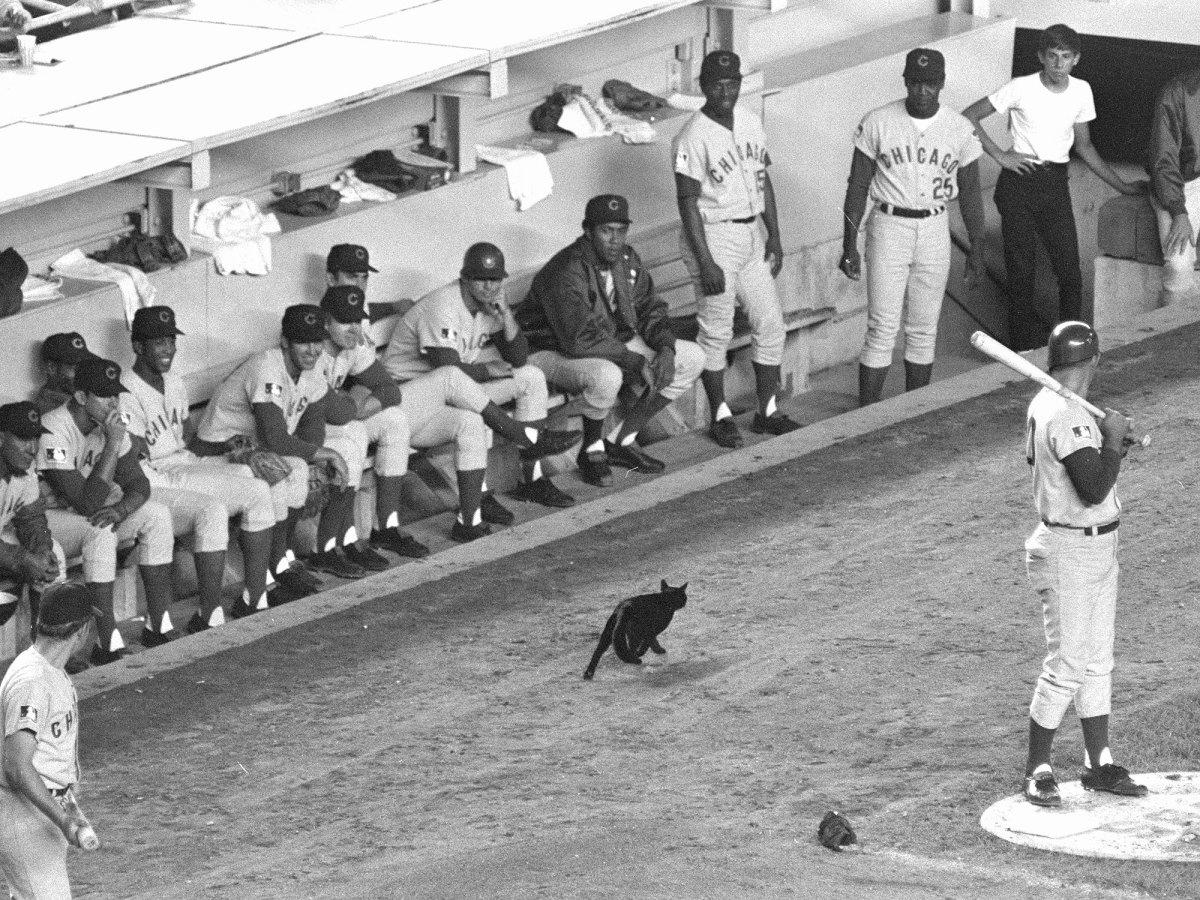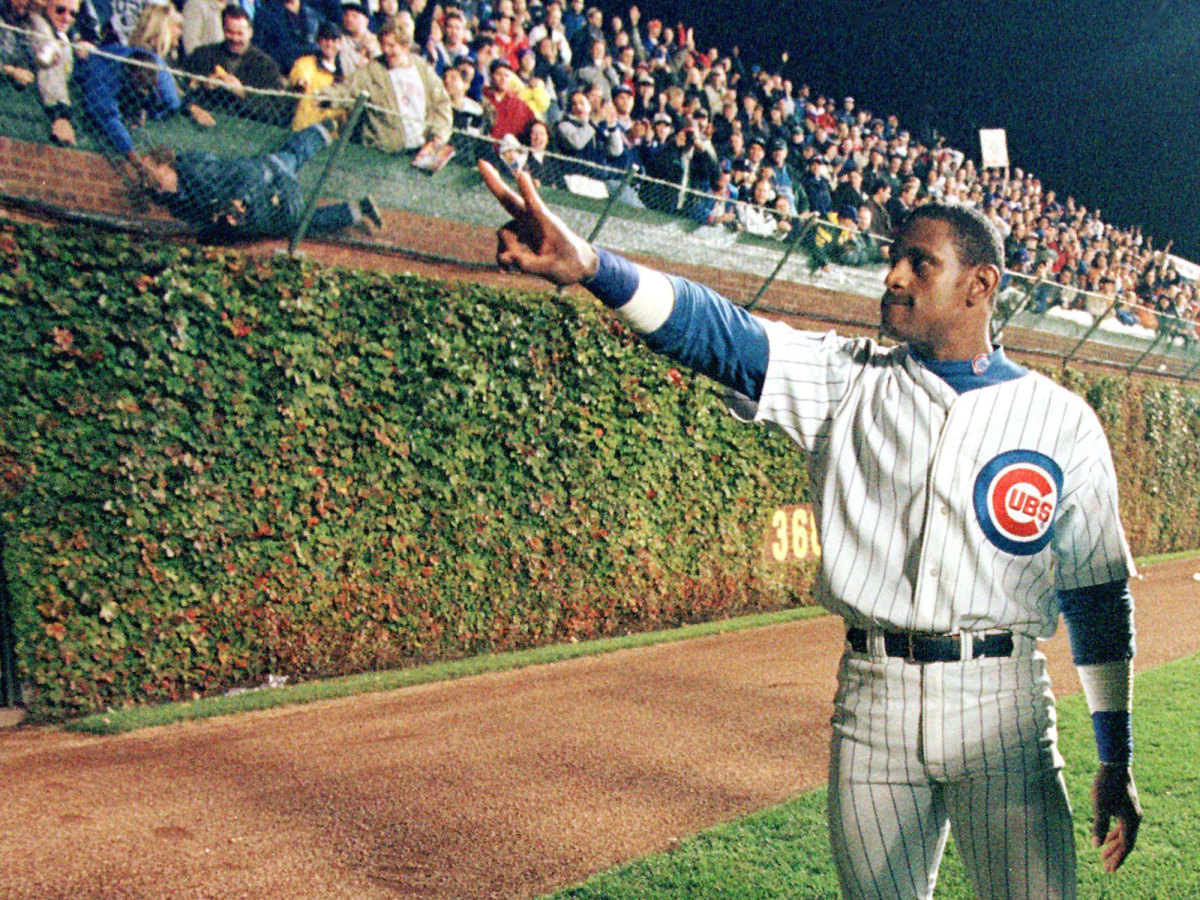Revisiting 100-plus years of Cubs' greatest moments and biggest misses

The Cubs’ origins date back to the founding of the National League in 1876. Initially known as the White Stockings, with star (and later manager) Cap Anson a constant surrounded by a rotating cast of early baseball luminaries, they won six pennants from 1876 to '86, but less success followed as they became the Colts ('90–97) and Orphans ('98–1902) before becoming known as the Cubs. Since then, the franchise has become known as much for its bad fortune as its glory days.
What follows is a timeline of the most notable moments in Cubs history, from their highs in the first half of the 20th century—including their last World Series title 108 years ago—to the franchise's frustrating misses and close calls ever since.
1908: Cubs win third straight pennant and second straight World Series, their last to date
The Cubs emerged as an NL powerhouse in 1906, winning 116 games (still an NL record) in Frank Chance's first full season as manager but losing the World Series to the crosstown "Hitless Wonders" White Sox. Along with staff ace Mordecai "Three-Finger" Brown, the double play combination of shortstop Joe Tinker, second baseman Johnny Evers and first baseman Chance—immortalized in Franklin Pierce Adams's poem, "Baseball's Sad Lexicon"—anchored three more pennant winners (1907, '08 and '10) in the next four years, with World Series triumphs over Ty Cobb and the Tigers in '07 and '08.
The latter victory was somewhat anticlimactic, on the heels of perhaps the most famous pennant race in history: The Cubs (99–55) beat out the Giants (98–56) by winning their Oct. 8 game, a replay of their Sept. 23 contest that had been ruled a tie because fans stormed the field after Giants rookie Fred Merkle failed to touch second base following an apparent walk-off hit by Al Bridwell. In the 1908 World Series, the Cubs held just about every Tiger save for Cobb in check and kept Detroit scoreless on a mere seven hits over the final two games. Though the Cubs were in the midst of the first dynasty of the modern era (post-1900), nobody could have foreseen that it would take them over a century to win their next title.
Who should Cubs want to face in National League Division Series?
1945: The Billy Goat Curse is born as Cubs lose seventh straight World Series
After winning in 1908, the Cubs lost the World Series to the A's in '10. They posted the NL's second-best cumulative record over the next 35 years and won pennants in 1918, '29, '32, '35, '38 and '45, but they fell in each World Series. Their best chance came in the last of those years, with a team led by stars Phil Cavaretta and Stan Hack and under manager Charlie Grimm, who piloted them to their 1932 and '35 pennants as well. Facing a Tigers team led by Hall of Famers Hank Greenberg and Hal Newhouser, the Cubs took a 2–1 series lead, capped by Claude Passeau's one-hit shutout in Game 3.
The series turned in Game 4, when according to lore Billy Sianis, owner of the Billy Goat's Tavern in Chicago, was turned away upon trying to enter Wrigley Field with his pet goat Murphy—"Because the goat stinks," said owner P.K. Wrigley. "The Cubs ain't gonna win no more," replied Sianis, and since then, they've yet to capture a pennant, let alone a championship.

1969: Cubs blow lead to Miracle Mets
After decades as a powerhouse, the Cubs fell upon lean times, finishing below .500 in 18 out of 21 seasons from 1946 to '66. Their fortunes began to turn under manager Leo Durocher, with a nucleus that included Ernie Banks, Ron Santo, Billy Williams and Ferguson Jenkins—all future Hall of Famers. After third-place finishes in 1967 and '68, the Cubs led the newly-formed NL East by nine games as of Aug. 16, but went just 17–26 the rest of the way while the upstart Mets went 36–11. Chicago surrendered first place after dropping a pair at Shea Stadium on Sept. 8 and 9; in the second of those games, a black cat let loose onto the field wandered in front of the Cubs' dugout while Santo was on deck. Omen or no, the Cubs lost that game and didn't spend another day in first that year. Neither Banks nor Santo (who retired in 1971 and '74, respectively) would ever play in the postseason, with the former setting a record for most games played (2,528) without doing so.
Cubs bench players enjoying first-hand look as team chases historic finish
1984: Cubs win first division title, blow 2–0 lead in NLCS
Mediocrity again befell the Cubs after 1969: From '72 to '83, they finished below .500 every year except for '77, when they went 81–81. But in 1984, under new manager Jim Frey, a squad led by MVP-winning second baseman Ryne Sandberg (who hit .314/.367/.520), June acquisition Rick Sutcliffe (who went 16–1) and closer Lee Smith went 96–65 en route to Chicago's first NL East title. The Cubs won the first two games of the NLCS against a Padres team led by Tony Gwynn, Steve Garvey and Goose Gossage but could not secure the elusive clincher. Leading 3–2 in the seventh inning of the decisive Game 5, Sutcliffe allowed four unearned runs after Tim Flannery's routine ground ball went through the legs of first baseman Leon Durham.
1989: Cubs win NL East again, but Giants roll to World Series
After years of debate, the Cubs finally installed lights in Wrigley Field in 1988 due to MLB's threat to move any postseason games to an alternate, lighted site. Managed by Don Zimmer and with Sandberg and Sutclifffe joined by youngsters Mark Grace and Greg Maddux, the Cubs finished June just 41–37 but went 52–32 the rest of the way to claim their second NL East title in six years. But in a five-game NLCS, Chicago fell to the Giants, who came from behind to win each of the last three games by a total of four runs. Series MVP Will Clark's two-run single off Mitch Williams in the eighth inning of Game 5—his 13th hit in 20 at-bats—was the decisive blow.

1998: Sammy Sosa leads Cubs to NL wild card
Over the summer of 1998, rightfielder Sammy Sosa and Cardinals first baseman Mark McGwire raced each other and history in an attempt to topple Roger Maris's longstanding single-season record of 61 homers. McGwire hit Nos. 61 and 62 against the Cubs' Mike Morgan and Steve Trachsel en route to a record 70, but Sosa's 66 homers helped the Cubs to 90 wins—including a victory over the Giants in a Game 163 tiebreaker—to claim the NL wild card. The season earned Sosa NL MVP honors, and the two sluggers' feel-good chase netted them Sports Illustrated Sportsmen of the Year honors. Alas, those were consolation prizes after the Cubs were swept out of the Division Series by the Braves, scoring a mere four runs against the future Hall of Fame trio of John Smoltz, Tom Glavine and Greg Maddux.
2003: The Bartman game keeps Cubs from a World Series return
Under manager Dusty Baker and with a rotation led by phenoms Mark Prior and Kerry Wood, the Cubs won 88 games and the NL Central, then beat the Braves in a five-game Division Series, their first postseason series win in 95 years. Facing the Marlins in the NLCS, they took a 3–2 series lead and were up 3–0 in Game 6 with five outs to go when all hell broke loose. Fan Steve Bartman interfered with leftfielder Moises Alou's attempt to catch a foul ball off the bat of Luis Castillo, who then drew a walk against the flagging Prior—the second of six consecutive batters to reach base. By the time the dust settled, the Marlins had rallied for eight runs to even the series, and Wood was knocked around in Game 7 as the Cubs once again fell short of a pennant.
The 30: Four teams making plans in this week's MLB power rankings
2007–08: Back-to-back division titles
Under manager Lou Piniella, a Cubs squad led by Alfonso Soriano, Aramis Ramirez, Derrek Lee and Carlos Zambrano won 85 games and the NL Central in 2007, only to be swept out of the Division Series by the Diamondbacks. With the additions of NL Rookie of the Year Geovany Soto plus midseason arrivals Jim Edmonds and Rich Harden, the cast returned to win 97 games and repeat as Central champions the following year—Chicago's first back-to-back postseason appearances in a century—but were unceremoniously swept again, this time by a Dodgers squad that outscored the Cubs 20–6 in a three-game Division Series.
2012: In Theo Epstein regime’s first season, Cubs lose 101 games
In October 2011, following the late-season collapse of his Red Sox, Theo Epstein resigned as Boston's general manager to become president of baseball operations for the Cubs, who had finished below .500 in both 2010 and '11 and were burdened by bad contracts and a weak farm system. Epstein hired former Red Sox assistant GM Jed Hoyer away from the Padres to become the Cubs' GM and embarked upon an ambitious rebuilding plan. After shedding key players like Zambrano and Ramirez, Chicago hit rock bottom in 2012, going 61–101—the franchise's first time losing at least 100 games since 1966 and, for all of its ups and downs, just the third time in the team's 137-year history to that point.
2015: Cubs return to postseason
Fueled by the arrivals of ex-Rays manager Joe Maddon, free-agent pitcher Jon Lester and rookies Kris Bryant, Kyle Schwarber and Addison Russell—plus the emergence of NL Cy Young winner Jake Arrieta—the Cubs won 97 games, enough to claim an NL wild-card spot. Behind Arrieta's five-hit shutout—his fourth consecutive scoreless outing in a row—and a home run by Schwarber, Chicago beat the 98-win Pirates, 1–0, in the wild-card game, then ousted the 100-win Cardinals in a four-game Division Series. The Cubs then ran into a buzzsaw in the NLCS in the form of the Mets, with Daniel Murphy homering in each game of a four-game sweep.
